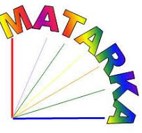Erdők állapotváltozásának nyomon követése nagygombák segítségével
Absztrakt
A Nemzeti Biodiverzitás-monitorozó Rendszer (NBmR) keretein belül két erdőrezervátum területén (Bükk és Mecsek hegységben) 2001-ben végzett mikológiái felmérés eredményeit mutatja be a jelen munka. A különböző összehasonlító elemzések azt mutatják, hogy az erdőállományok mikológiái jellemzői, valamint egyes indikátorfajok jól használható mutatók az erdők állapotának, természetvédelmi értékelésének megállapítására.
Hivatkozások
Arnolds, E., Kuyper, W. & Noordeloos, M. E. (eds) (1995): Overzicht van de Paddestoelen in Nederland. -Nederlandse Mycologische Verenigung, Wijster, 871 pp.
Tóthmérész, B. (1993): NuCoSa 1.0: Number cruncher for community studies and other ecological applications. - Abstracta Botanica 7: 283-287.
Rimóczi, I., Pál-Fám, F., Siller, I., Jakucs, E. & Vasas, G. (2000): lavaslat a nagygombák monitorozásának mintavételi módszereire a Nemzeti Biodiverzitás-monitorozó Rendszerben, 3. változat. - KvVM Természetvédelmi Hivatal, Budapest, (kézirat).
Rimóczi, I., Siller, I., Vasas, G., Albert, L., Vetter, I. & Bratek, Z. (1999): Magyarország nagygombáinak javasolt vörös listája. - Clusiana 38(1-3): 107-132.






